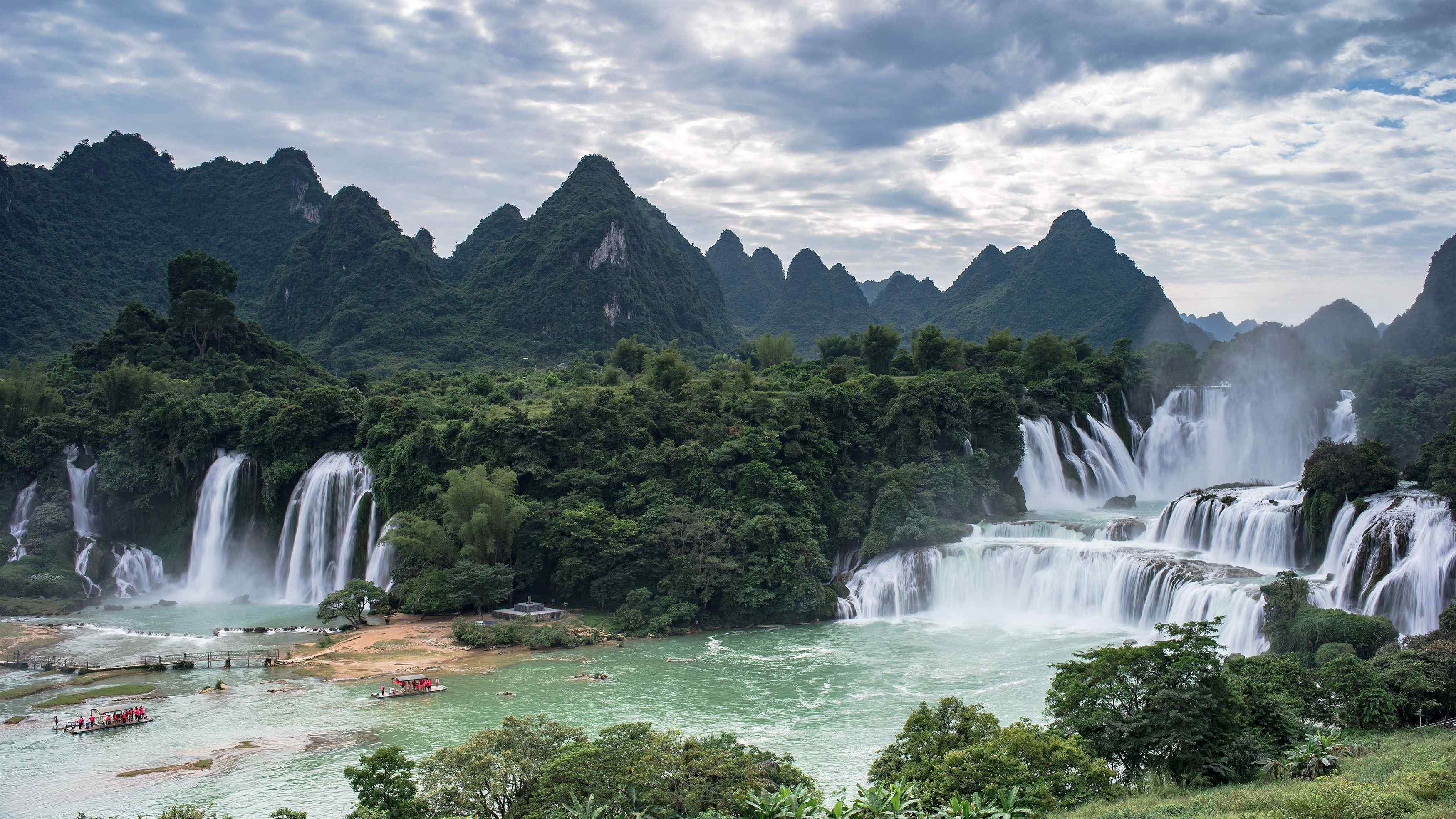
Travel
14:39, 27-Apr-2019
Waterfall on China-Vietnam border a magnet for tourism
CGTN

China's first cross-border tourism zone in south China's Guangxi Zhuang Autonomous Region will conduct trial operations in June with neighboring Vietnam following the surge in tourism between the two countries last year.
The Detian-Ban Gioc tourism cooperation zone is based on Asia's largest cross-border waterfall – Detian Waterfall – which at 208 meters wide has water rushing down a three-tiered cliff from a drop of 70 meters.
It consists of two parts: one, named Detian Waterfall, is on the Chinese side, and the other, named Ban Gioc Waterfall, is on the Vietnamese side.
Last year, Detian Waterfall Scenic Area was rated as a national 5A tourist attraction, boasting wide popularity at home and abroad.

Detian Waterfall Scenic Area in south China's Guangxi Zhuang Autonomous Region. /VCG Photo
Detian Waterfall Scenic Area in south China's Guangxi Zhuang Autonomous Region. /VCG Photo
Wang Yutong, a tourist from Chengdu in southwest China's Sichuan Province, who made her first visit to Detian Waterfall, said, "I was impressed by the splendid waterfall scene, and its status as a cross-border waterfall made it unique and more attractive."
Wang and her friends, all from Chengdu, drove to the scenic spot themselves, saying they were all enjoying the view along the way. "I would like to bring my parents to Guangxi next time by car," she said.
To explore and protect cross-border tourism resources, China and Vietnam signed a cooperation agreement on the Detian Waterfall region in November 2015, making it the country's first cross-border tourism cooperation zone.

Detian Waterfall in south China's Guangxi Zhuang Autonomous Region. /VCG Photo
Detian Waterfall in south China's Guangxi Zhuang Autonomous Region. /VCG Photo
In addition to the trial operation of the zone in Chongzuo City, two other border cities – Fangchenggang and Baise – have been selected as major cities to boost cross-border tourism.
The region has witnessed a surge in cross-border tourism in the past year, with the number of visits to the region's eight prefecture-level border cities increasing 25.8 percent year-on-year to 53.2 million, according to the regional government.
It added that tourism revenue soared by 29.8 percent last year, reaching nearly 50 billion yuan (7.35 billion U.S. dollars).
(Cover: The Detian Waterfall Scenic Area in south China's Guangxi Zhuang Autonomous Region. /VCG Photo)
Source(s): China Daily

SITEMAP
Copyright © 2018 CGTN. Beijing ICP prepared NO.16065310-3
Copyright © 2018 CGTN. Beijing ICP prepared NO.16065310-3